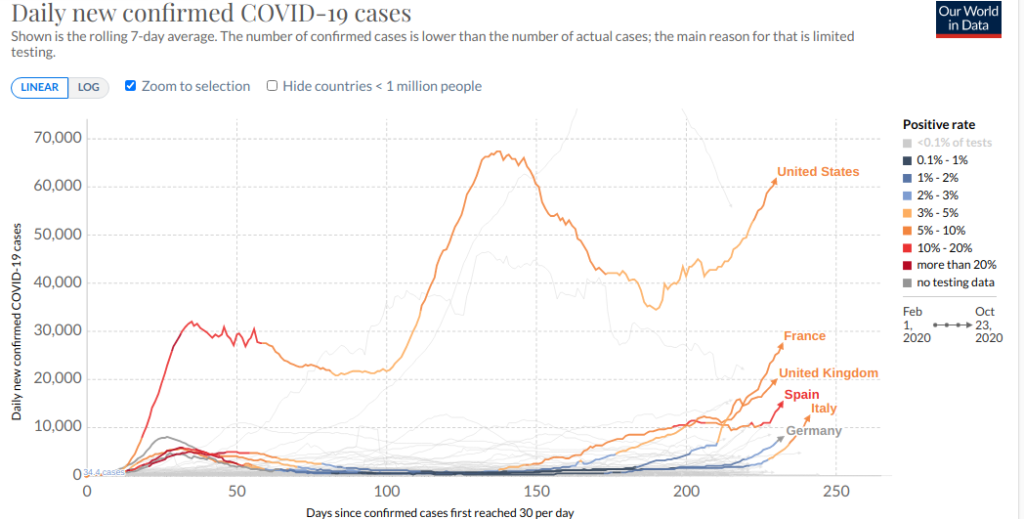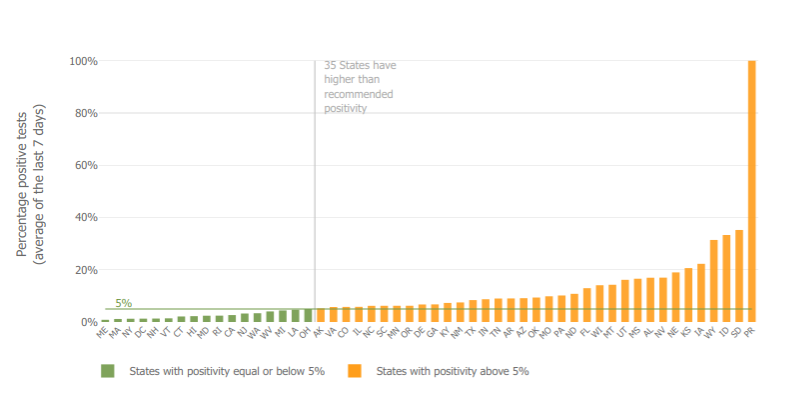Every piece of data is pointing in the same direction. We’re back to where we started with the coronavirus cases, except everyone is more fatigued about the whole situation, the economy has taken a hit, and general lockdowns would be almost impossible in the current situation.
The second wave (or the third one, in some areas), has come. It looks to be bigger than the previous one and while there has been significant progress in terms of testing and treatment, we’re still in for a dreary winter.

Winter is coming. With it, the cold and lower humidity that some viruses love so much will make us huddle into indoor spaces, where the novel coronavirus SARS-CoV-2 can best spread to new hosts. Winter is perfect for the virus, but even before winter has truly set in, things don’t look too rosy.
Across Europe, a new wave of cases is sweeping over the entire continent. After months in which the pandemic was largely kept in check with the help of lockdowns, masks, and distancing, European countries are struggling to keep things under control. For a time, it seemed that European life could almost return to a quasi-normal state — but already, the second wave is dwarfing the first one, and it’s not clear just how much it will continue to grow.
France has reported over 42,000 cases in a single day, after the previous record was 7,500. Spain is at almost 21,000 cases daily, up from 9,000 in March. And, even in Italy, the previous epicenter of the pandemic, there have been 19,000 cases reported in a single day, after a previous record of under 7,000.
It’s not just the extra number of tests that’s driving cases up — as some political leaders have repeatedly claimed — you can see that easily in the positivity rate, which is also increasing.
The World Health Organization (WHO) has advised governments to keep the rate of positivity (ie, out of all tests conducted, how many came back positive for COVID-19) at 5% or lower. If the rate is over 5%, the health organization notes, there’s probably an important number of cases you’re missing and you’re not testing enough. Yet, with some exceptions such as Norway or Canada, the positivity rate in most countries is well over 5%.
Then, there’s the United States.
From bad to worse
So far, it’s probably safe to say that the US has done a significantly worse job than the European Union (EU) in this pandemic. With a population that’s around 40% larger, the EU has had fewer cases and fewer fatalities.
The US has already had two large infection waves and is currently experiencing a 15% increase compared to last week. Hospitalizations are on the rise as well. There are about 39,000 people in the hospital today for COVID-19, the most since early August. According to a Reuters tally, the US has already surpassed its record of confirmed cases, with few signs of slowing down.
The positivity rate is also a concerning metric in the US. While it was hovering below 5% for a while, it’s now over 5% in 35 states.

Now what?
It’s not bad on every count. We’ve learned a thing or two about the virus since the pandemic started.
In most places, the survival rate of the second wave is higher than the first one. This is owed in part to increased testing (which means we now ‘see’ more cases than we did before), but also due to better treatments. We’re also a bit better at treating the severe cases that reach the hospital.
We’ve also learned some of the most effective prevention measures (like washing hands and wearing masks), and we have a better idea about how the virus spreads. In addition, younger people make up a larger part of the number of cases, and they’re more resilient in the face of the virus.
But make no mistake — the pandemic is killing people, and if cases start to rise, the chart of rising cases will leave a trail of bodies in its path.
The official number of Americans killed by the pandemic is currently 212,000 — but that’s almost certainly an understatement.
But while in a sense we’re back where we started from, we now have one big advantage: we saw this coming. Unlike the first wave of the pandemic, which came more as a surprise, this time, we were warned.
Whether or not this will make a difference remains to be seen.
Was this helpful?



